.jpg)
1998 911 Carrera 4S
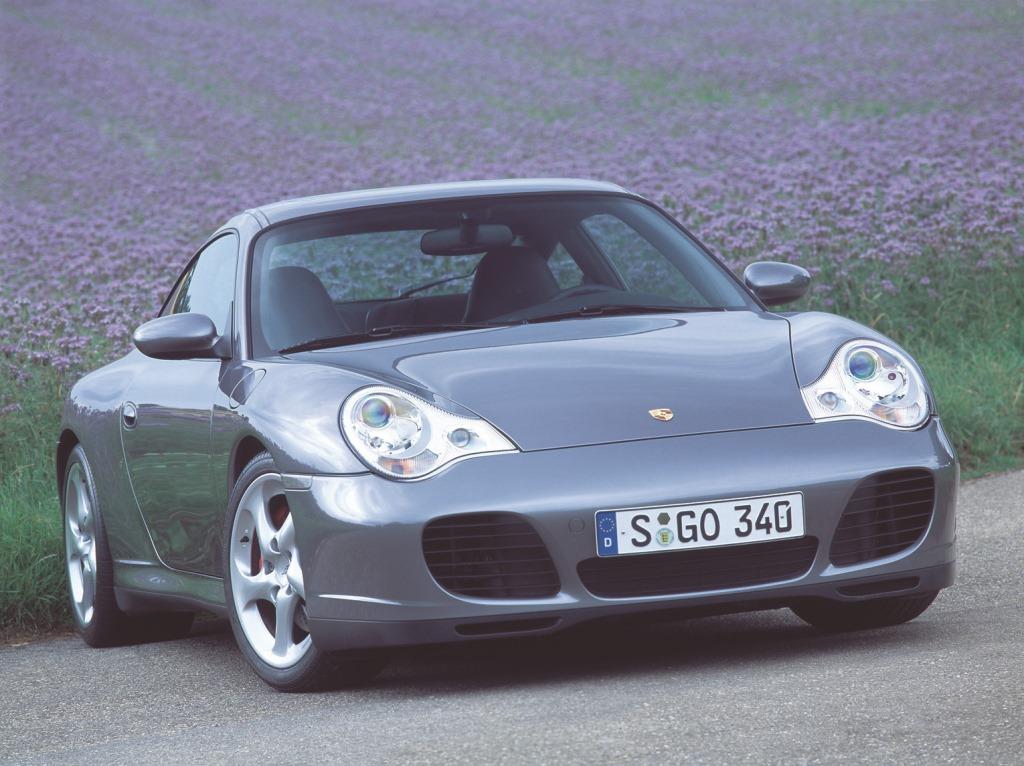
The new 911 Carrera 4S looks very similar to the 911 Turbo, as the front end has the same dark-finish air intake openings as the top model. A slight difference is visible at the spoiler lip, which is slightly raised in the center, thereby documenting the new, carefully controlled aerodynamic balance.
The rear section of the body is 65 mm wider than on the Carrera models; and in the wheel housings the standard 18-inch alloy wheels in Turbo styling provide ample traction. Another subtle difference between this model and the Turbo becomes obvious at the rear: A Carrera spoiler is used instead of the extending divided wing, and includes a red light strip providing a visual link between the two rear lights. These detail modifications give the Carrera 4S a distinctly different, striking rear-end appearance.
This model has a 235 kW (320 bhp) 3.6-liter ‘Boxer’ (flat-six) engine and standard four-wheel drive. With this technology and the viscous multi-plate clutch, the front wheels deliver a constant minimum of five percent of the tractive force to the road, rising to as much as 40 percent if more is needed. The "Porsche Stability Management" (PSM) electronic dynamic driving control system, which in conjunction with four-wheel drive, makes this a particularly safe car, is also standard equipment.
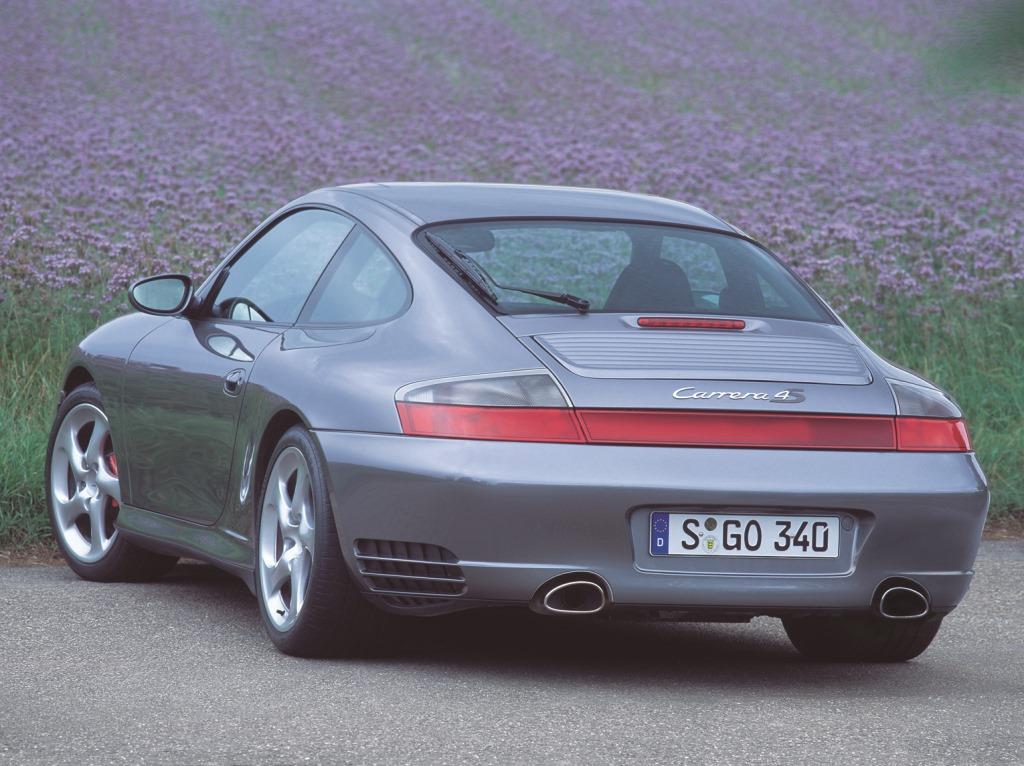
The 911 Carrera 4S’s suspension has been lowered by ten millimeters and is based on the 911 Turbo; including the brake system, the engine mounts and a front-axle pivot bearing optimized for good brake ventilation. This layout provides a unique combination of sportstyle road behavior, supreme handling and extremely high road safety. The wider rear track and the 295/30 R 18 rear tires also increase the dynamic driving potential.
The brake system adopted from the 911 Turbo is another top-level active safety feature. Compared with the Carrera models, the front and rear wheels are decelerated by larger, uprated four-piston fixed calipers and the drilled, internally ventilated brake discs are larger in size. These measures ensure extreme braking power in even the toughest conditions such as motor racing.
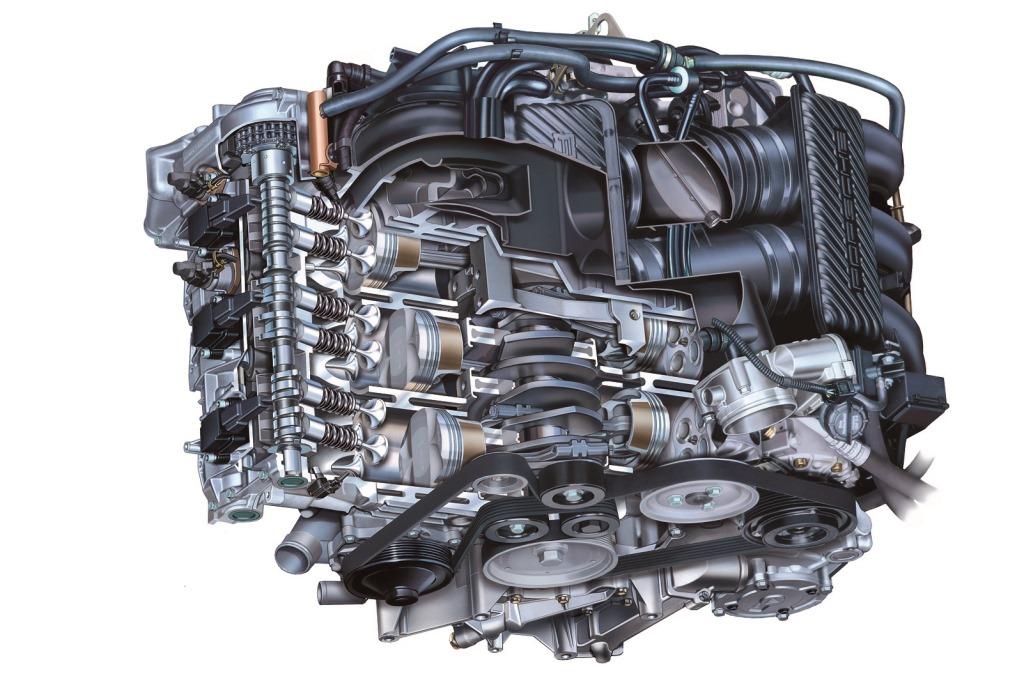
In addition to features that also appear on the Carrera models, the Carrera 4S has a metallic paint finish, an abundance of leather in the interior, an audio ‘sound package’ and electrically adjustable seats with a memory function for the driver’s side. The seat memory can be activated via buttons on the door sill or with the remote-control ignition key.
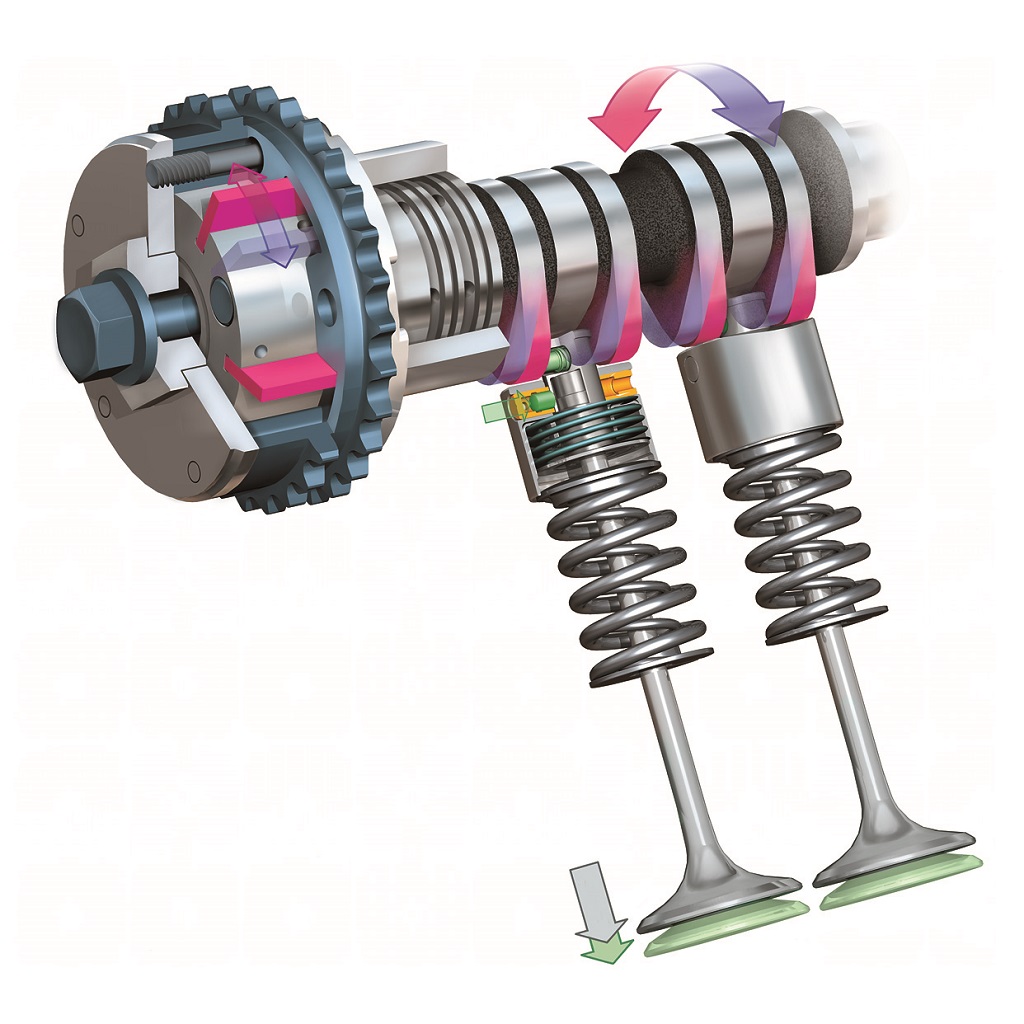
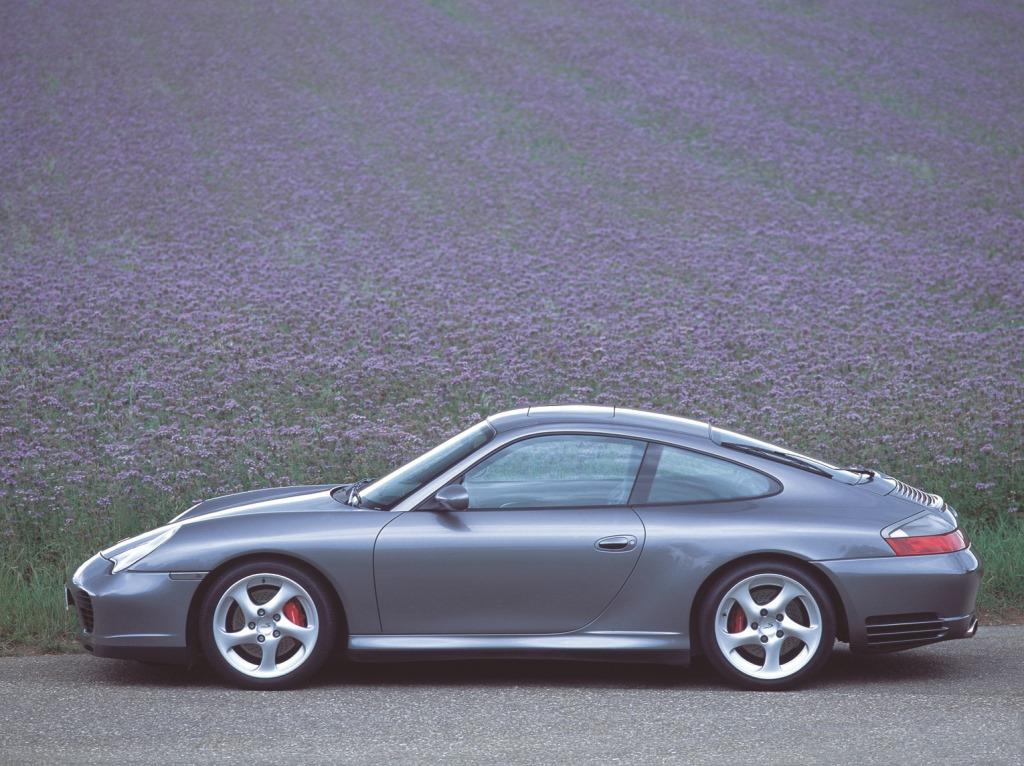
The new Carrera 4S leaves us in no doubt as to what inspired its design: the 911 Turbo. The rear fenders of the Carrera 4S increase its width by 65 millimeters compared with the 911 Carrera, creating ample space for the standard 18-inch alloy wheels of Turbo design with 295/30 R 18 tires. The Turbo model’s typical air intakes in the broad fenders, however, are lacking. These large side openings are not needed, as the engine compartment has no charge-air intercoolers demanding an abundant supply of fresh air. This, along with other aerodynamic measures, results in the Carrera 4S’s improved aerodynamic drag coefficient of Cd = 0.30.
The engine cover on the 911 Carrera 4S has been matched to the wider rear end and, unlike the other 911 models, is made of glass-fiber reinforced plastic. This material is frequently used in Porsche’s motor sport activities and gives the designers and development engineers more freedom at the design stage. At the lower edge of the rear flap is a red light strip providing a visual link between the two rear lights. Another distinguishing Carrera 4S feature is the rear spoiler, adopted from the 911 Carrera, which extends automatically at 120 km/h for safe road behavior at high speeds. Like the rear cover, the front end with its three characteristic dark-trimmed air intake openings has been taken from the 911 Turbo, but modified slightly: Raising the spoiler lip in the center adjusts front axle lift so that optimum aerodynamic balance between axle lift forces is obtained.
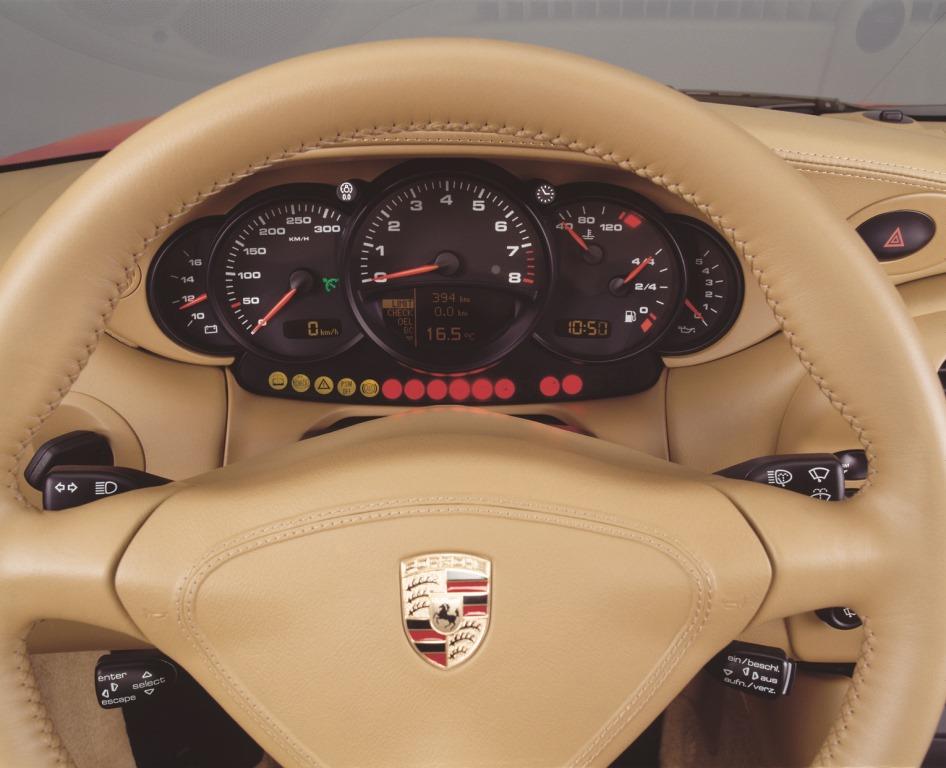
Compared with the Carrera 4, the weight has gone up slightly, resulting mainly from the wider rear end and more powerful brake system. However, this has only a minor effect on the thrust available from the 370 Nm, 235 kW (320 bhp) 3.6-liter Boxer (flat-six) engine, which accelerates the car from a standstill to 100 km/h in 5.1 seconds and gives it a top speed of 280 km/h. Despite this vast power output and the high, flat torque curve, fuel consumption according to the EU standard test method is 11.4 liters per 100 kilometers, an improvement of more than seven percent compared with the previous 993-series model with 210 kW (285 bhp) rear engine.
This significant reduction in fuel consumption from the six-cylinder engine is mainly due to VarioCam Plus, which Porsche developed initially for the 911 Turbo, but which is now, with suitable settings, also used on naturally-aspirated engines in other 911 models. This system, which adds a valve lift changeover device on the inlet side to the “VarioCam” variable inlet camshaft system, consists of movable bucket-type tappets, which are actuated by an electrohydraulic 3/2-way valve. Different cam profiles are provided on the inlet camshaft, and brought into action with the corresponding valve lift values by repositioning the tappets. One could say that VarioCam Plus makes two engines out of one: the first has low valve lift and is ideal for city traffic and part-loads. The second engine, with greater valve lift, supplies three times as much torque within a fraction of a second and is designed for top performance.
The 3.6-liter flat-six ‘Boxer’ engine has four oxygen sensors in the exhaust system – one control and one diagnostic sensor for each cylinder bank. Together with secondary air injection, modern catalytic converter technology using metal monoliths enables the 911 Carrera 4S to comply with exhaust emission limits worldwide, including the EU 3 standard, which has been in effect since January 1, 2001, and the demanding LEV standard.
The Carrera 4S has four-wheel drive as a standard in both the six-speed manual-gearbox and Tiptronic S versions. With four-wheel drive including a multi-plate viscous coupling clutch in the driveline, the front wheels apply a constant minimum of five percent of total tractive force to the road, but up to 40 percent if more is needed. Rather than ultimate traction, the emphasis is on supreme behavior and safety. In conjunction with four-wheel drive, the “Porsche Stability Management" (PSM) electronic dynamic driving control system makes driving particularly safe and is also standard equipment.
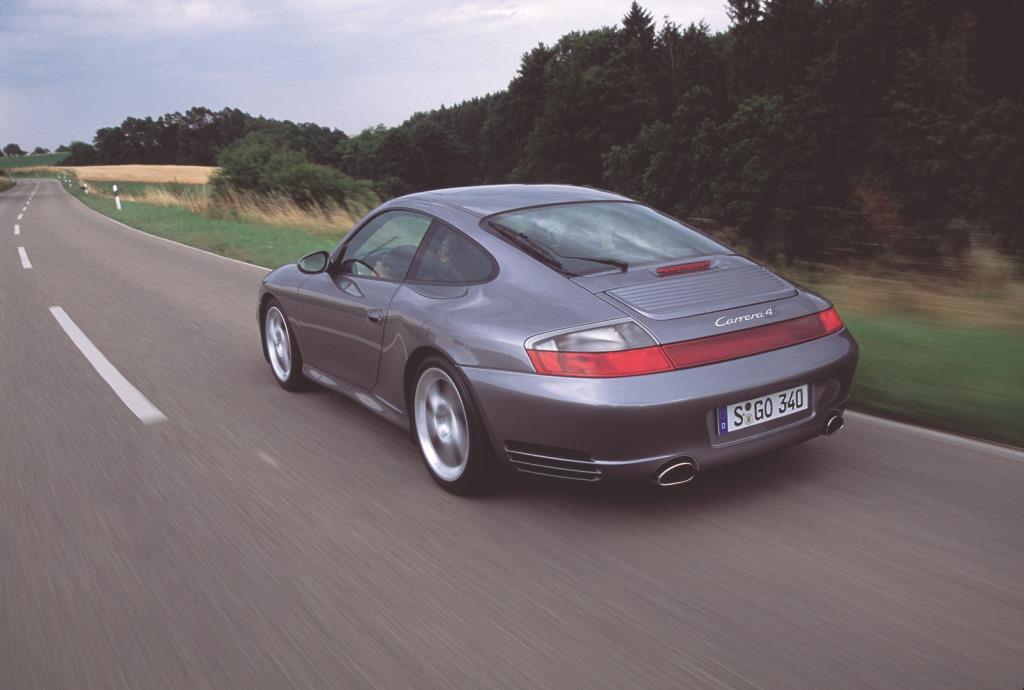
With its Turbo brake system, the new 911 Carrera 4S has the same exceptional braking performance as the 911 GT2 and 911 Turbo. Unlike the Carrera models, larger uprated fourpiston fixed calipers are responsible for deceleration at the front and rear wheels. The drilled, internally ventilated brake discs are of course larger than before: the diameter at the front is 330 millimeters and the width 34 millimeters. The rear brake discs have the same diameter and are 28 millimeters wide. This system guarantees extreme braking power even in the toughest conditions such as motor racing.
As far as equipment is concerned, Porsche leaves the Carrera 4S’s exclusive position in no doubt, placing it very close to the 911 Turbo and therefore giving it a considerably larger number of standard equipment items than on other Carrera models. In addition to four-wheel drive and Porsche Stability Management, these include special 18-inch wheels of Turbo design and 295/30 R 18 rear tires, a brake system increased in size, red brake calipers, metallic paint finishes, an audio system with ‘sound package’, electrically adjustable seats with a position memory function and all leather upholstery and trim.
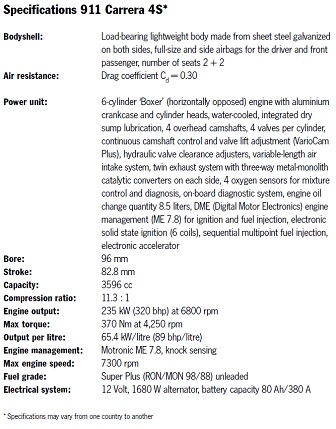
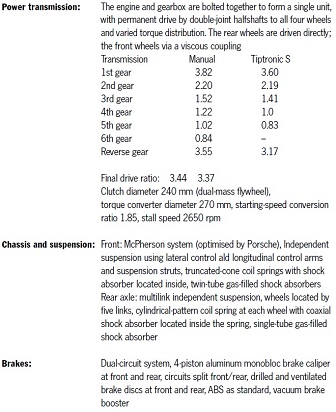
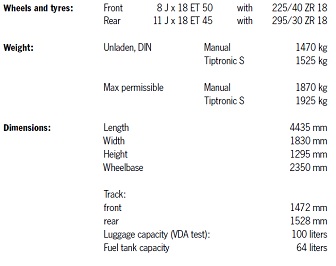
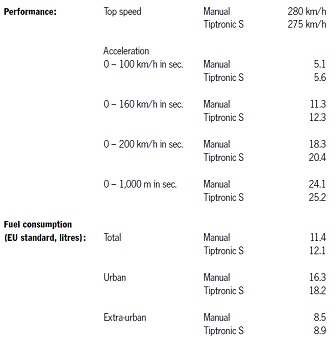
.jpg)
1998 911 Carrera 4S
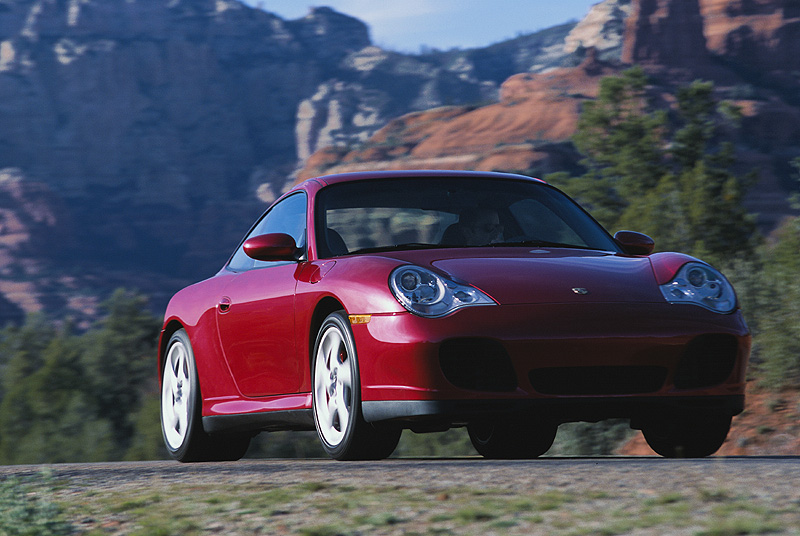
2004 911 Carrera 4S (NA)

Porsche Press kit

Porsche Literature

Our Porsche Cars